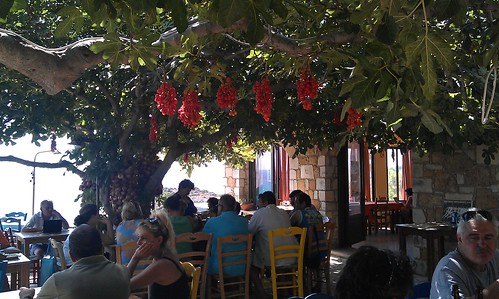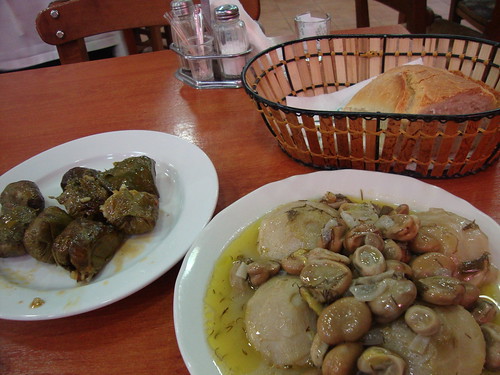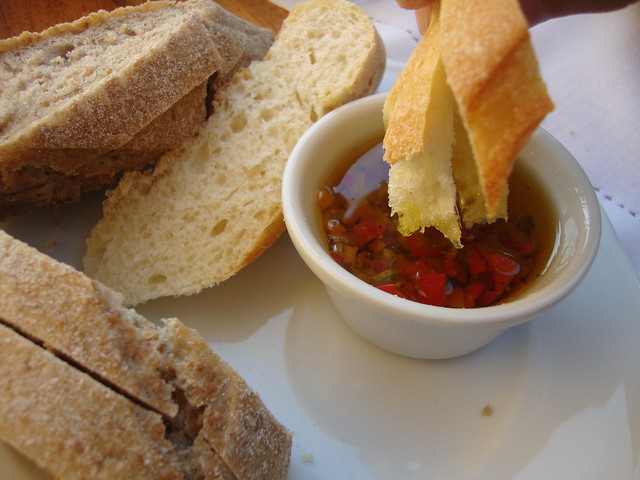The tourist season is upon us. If you're coming to Crete on holiday during the non-Greek Easter period, you will still have the chance to experience Greek Easter, as they both fall within a week from each other (Greek
Easter always falls either on the same day or later than calendar Easter). Here's a guide to what you can choose from for your meals in Crete. This article was originally published through Suite101.
Crete's ability to supply herself with fresh produce all year round has made the island famous for its locally grown seasonal food and its virgin olive oil.Crete is the largest island in Greece and the fifth largest in the Mediterranean. As the birthplace of the Mediterranean diet, it has strong agricultural roots, while relying heavily on summer tourism, with its clean enticing beaches and unique opportunities for agro-tourism holidays. The food of Crete is characteristic of Cretan culture; there is no event that isn’t associated with food on the island. The topography of Crete, with mountain ranges spanning its length, is diverse enough for the west to display marked gastronomical variations to that of the east.
The island's move away from farming to tourism and other urban jobs was inevitable; primary goods in the food culture of Crete are now being cultivated or raised industrially. Globalisation aside, Cretan cuisine remains relatively true to its origins, while locals are deeply conservative when it comes to food. The evolving nature of Cretan cuisine is mainly based on health concerns, such as the use of fewer fats and lipids, and the creative use of the wider range of fruits and vegetables now available. Due to the plentiful opportunities for self-production and the popularity of daily street markets, Crete also displays a markedly different food retail environment compared to other parts of Greece.
Crete's ability to supply herself with fresh produce all year round has made the island famous for its locally grown seasonal food and its virgin olive oil.Crete is the largest island in Greece and the fifth largest in the Mediterranean. As the birthplace of the Mediterranean diet, it has strong agricultural roots, while relying heavily on summer tourism, with its clean enticing beaches and unique opportunities for agro-tourism holidays. The food of Crete is characteristic of Cretan culture; there is no event that isn’t associated with food on the island. The topography of Crete, with mountain ranges spanning its length, is diverse enough for the west to display marked gastronomical variations to that of the east.
Fresh, local, seasonal
The food of Crete is based on fresh local seasonal produce and a heavy use of olive oil. The food is generally all sourced from the island, although staples such as potatoes, onions and garlic (among others) are imported both from mainland Greece and abroad, mainly due to their increased demand and the fact that people have moved away from a subsistence economy, and are now generally urban in essence. Nevertheless, half the population still live in (semi-)rural areas.The island's move away from farming to tourism and other urban jobs was inevitable; primary goods in the food culture of Crete are now being cultivated or raised industrially. Globalisation aside, Cretan cuisine remains relatively true to its origins, while locals are deeply conservative when it comes to food. The evolving nature of Cretan cuisine is mainly based on health concerns, such as the use of fewer fats and lipids, and the creative use of the wider range of fruits and vegetables now available. Due to the plentiful opportunities for self-production and the popularity of daily street markets, Crete also displays a markedly different food retail environment compared to other parts of Greece.




No comments:
Post a Comment